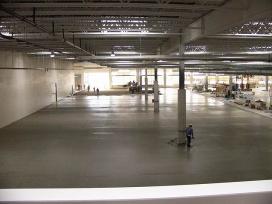|
Who Should Attend Any architect, engineer, designer, building owner, or property manager that has ever been disappointed when seeing a crack in their concrete will benefit by understanding how they can avoid this potential issue in the future.†† Inspectors, concrete producers, building officials, concrete contractors, and field personnel will benefit by understanding how each member of the construction team can identify the likelihood of cracks and communicate effective solutions to the design team. |
|
Concrete is everything itís cracked up to be.† Learn to identify the different types of cracks in concrete and what causes them to design building elements that will avoid potential problems.† |

Concrete:Managing Cracks |
|
■ Types of Cracks ∑ Shrinkage ∑ Thermal ∑ Settlement ∑ Curling ■ Mechanics of Concrete Cracks ∑ Volume change ∑ Tensile stress ∑ Sub-base failures ■ Methods of Managing Cracks ∑ Mix design ∑ Sub-base design & construction ∑ Joints ∑ Curing ∑ Reinforcement |
|
Earn Continuing Education Credit By attending this course, you will earn .4 Continuing Education Units (CEU), 4 AIA Learning Units (LU), or 4 PE Professional Development Hours (PDH). |
|
When installed properly, concrete can be one of the most durable and long lasting building materials available.† Unfortunately it can also be one of the most troubling, especially when cracks unexpectedly appear.† Understanding the different types of cracks, why they develop, and their mechanics, enables designers to anticipate the potential for cracks and design accordingly.† Durable, high strength, and crack resistant concrete does not just happen by accident.† Success depends on an understanding of the causes of cracking and a readiness to do what is necessary to prevent it.† Concrete: Managing Cracks enables participants to identify the locations of potential cracks and effectively design around them.† Contrary to general opinion it is possible to control cracking.† An explanation of why the various types of cracks develop will assist participants to identify methods of managing cracks that will lead to successful projects that meet designers and users expectations.† Attendees review well-established guidelines and industry proven methods of controlling cracks and participate in practice exercises that will familiarize them with practical solutions to concretes inherent tendency to crack. |



